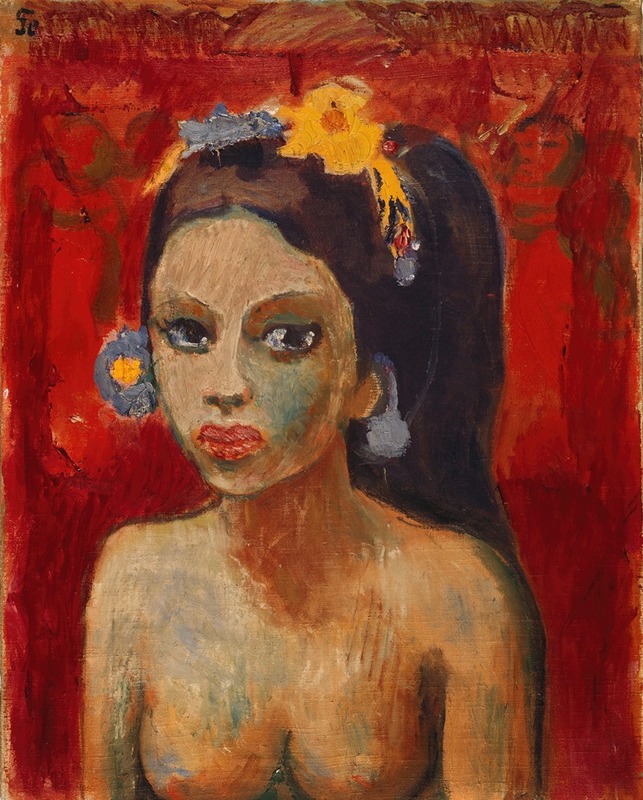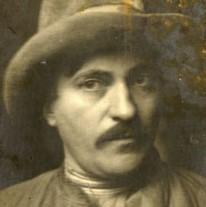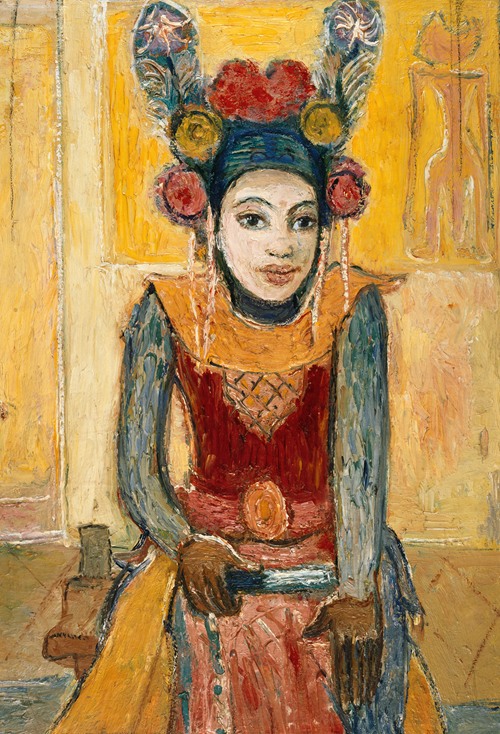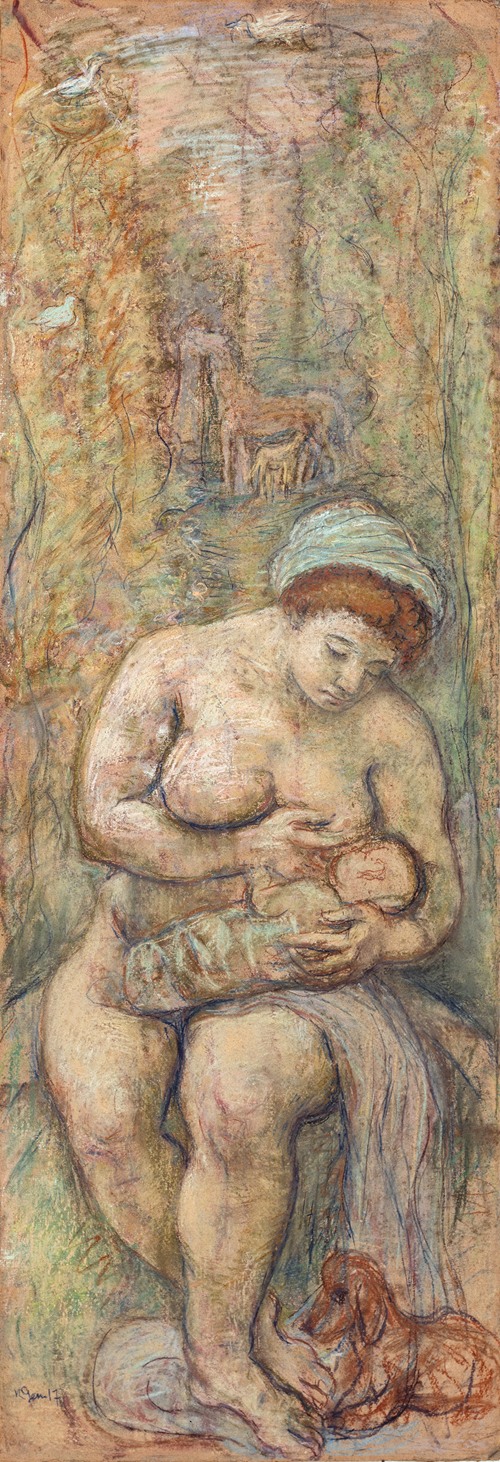

Robert Genin was a Russian artist, painter, draftsman, and illustrator of Jewish origin, who lived in the Russian Empire, Germany, France, Switzerland and the USSR.
Born on 11 August 1884 in the family of a Jewish tradesman, Genin studied art in Vilna (1898-1900) and in Odessa (1900-1902). At the end of 1902 he moved to Munich where for a couple of weeks he attended the school of Anton Ažbe. In 1903, he moved to Paris, where he lived in La Ruche from 1905 to 1907. In Paris, he admired the art of Puvis de Chavannes, and many notable early works of Genin (until 1914) bear his influence.
In 1907, Genin returned to Munich and began to work for the magazine Jugend, where 40 of his illustrations were published. In 1912, he became one of the founding members of the artists group Sema, and in 1913 became a member of the Münchener neue Secession. The outbreak of the First World War (1914-1918) was a disastrous turn for this rise in the German art scene, and during the war Genin was interned in Munich as citizen of a hostile state. After the war he moved to Berlin.
In 1919, Genin has acquired a small house in the fishering village of Ascona in Switzerland, where he subsequently spent several months each year.
Over the period of 1915-1926, the Genin's styles of painting and drawing developed in line with the direction of German expressionism.
In 1926, Genin undertook a voyage to the island of Bali, which provided important impulse to his work. Genin wrote and illustrated a book about his impressions, which was published 1928.
In 1929, Genin moved to Paris. There, his artistic style developed further under the influence of Fauvism and Neo-primitivism.
In 1936, Genin finally returned to the USSR, with the intention of taking an active part in building up the new socialist society by painting frescos on the walls of Moscow's new buildings. In March of that year, while Genin was already in Moscow, his first (and the last) American exhibition was held in NYC at Lilienfeld Galleries.
In Moscow, his first major commission was a fresco for one of the pavilions at the All-Union Agricultural Exhibition (VSKhV). However, in October 1938, the fresco has been covered up, in line with the political processes which had gained strength in the USSR. His second major commission in Moscow was frescoes for the Palace of Soviets, a commission which was terminated by the outbreak of the Second World War. Genin has committed suicide in August 1941, a few days after a devastating air raid by German bombers.


